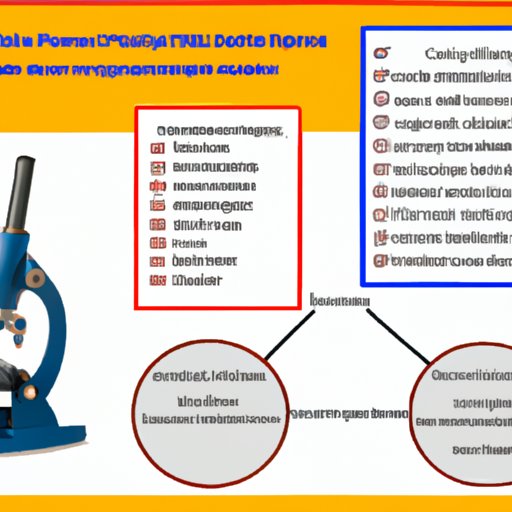Introduction
Science and pseudoscience are two terms that are often used interchangeably, but they are not the same. Science is a systematic enterprise that builds and organizes knowledge in the form of testable explanations and predictions about the natural world. Pseudoscience, on the other hand, is a body of practices or beliefs that are presented as scientific but are actually based on false information or are not backed up by any evidence. The purpose of this article is to explore the differences between science and pseudoscience.
Differences in Research Methods
The primary difference between science and pseudoscience lies in the research methods that are used. In science, evidence-based research is used to understand the natural world. This means that scientists look for data and facts that can be verified and tested in order to come to a conclusion. Pseudoscientists, however, rely heavily on anecdotal evidence, which is based on personal experiences or stories that cannot be verified. For example, many pseudoscientists believe that homeopathy is an effective treatment for illness, but there is no scientific evidence to support this claim.
Peer Review Process
Another key difference between science and pseudoscience is the peer review process. Scientific studies must go through a rigorous peer review process before they are published. During this process, experts in the field check the study for accuracy, relevance, and quality. If the study passes the peer review process, it is then published in a reputable journal. Pseudoscientific studies, however, often bypass the peer review process, making them unreliable and untrustworthy.

Testing and Evaluating Scientific Theories
In science, theories are tested and evaluated using empirical evidence. This means that experiments are conducted and observations are made in order to verify or disprove the theory. Pseudoscience, on the other hand, does not use empirical evidence to test its theories. Instead, pseudoscientists rely on anecdotal evidence, which is not reliable or trustworthy.
Consequences of Relying on Pseudoscience
Relying on pseudoscience can have serious consequences. One of the most prominent examples of this is the anti-vaccination movement. This movement is based on the pseudoscientific belief that vaccines cause autism, when in fact there is no scientific evidence to support this claim. As a result, some children are not being vaccinated and are at risk for contracting serious diseases.
Conclusion
Science and pseudoscience are two very different disciplines. Science is based on evidence-based research, while pseudoscience is based on anecdotal evidence. Scientific studies must pass a rigorous peer review process before they are published, while pseudoscientific studies often bypass this process. Finally, scientific theories are tested and evaluated using empirical evidence, while pseudoscience relies on anecdotal evidence. It is important to differentiate between science and pseudoscience in order to make informed decisions.
(Note: Is this article not meeting your expectations? Do you have knowledge or insights to share? Unlock new opportunities and expand your reach by joining our authors team. Click Registration to join us and share your expertise with our readers.)
